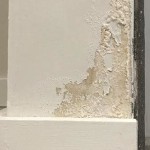How To Tile a Small Bathroom Floor: A Comprehensive Guide
Tiling a small bathroom floor can significantly enhance its aesthetics and functionality. It's a project achievable by many homeowners with a commitment to detail and a willingness to learn. This article provides a step-by-step guide to tiling a small bathroom floor, ensuring a professional-looking result.
Before beginning, it is crucial to assess the current state of the bathroom floor. Determine if the existing subfloor is level, structurally sound, and free of any moisture damage. Addressing these issues beforehand will prevent future problems and ensure the longevity of the tiled floor. Gather all necessary tools and materials to avoid interruptions during the tiling process.
1. Preparation is Paramount: Ensuring a Solid Foundation
Proper preparation is the most critical step in any tiling project. This involves several stages, starting with removing the existing flooring and preparing the subfloor. Neglecting this stage can lead to uneven tiles, cracked grout, and ultimately, a failed tiling job.
Removing the Existing Flooring: The initial step involves removing any existing floor coverings, such as linoleum, vinyl, or old tiles. This often requires the use of a scraper, utility knife, and pry bar. Exercise caution to avoid damaging the subfloor during this process. After removing the existing flooring, thoroughly clean the subfloor to remove any adhesive residue, dirt, or debris. A scraper and a solvent-based cleaner are useful for this purpose.
Assessing and Preparing the Subfloor: Once the existing flooring is removed, carefully inspect the subfloor. Look for signs of moisture damage, rot, or unevenness. If there are soft spots or areas of significant damage, these need to be repaired or replaced. Minor imperfections can be addressed with a self-leveling compound. This compound is mixed according to the manufacturer's instructions and poured onto the subfloor, allowing it to spread and create a smooth, level surface. Allow the self-leveling compound to dry completely before proceeding.
Cleaning and Priming: After leveling the subfloor, thoroughly clean it to remove any remaining dust or debris. This can be done with a vacuum cleaner and a damp mop. Once the subfloor is clean and dry, apply a suitable primer. The primer improves the adhesion of the thin-set mortar to the subfloor. Choose a primer that is compatible with the type of tile being used. Allow the primer to dry completely before moving on to the next step. Applying painter’s tape to the walls above the floor will protect them from the primer and thin-set.
Gathering Tools and Materials: Having all the necessary tools and materials readily available will streamline the tiling process. Essential tools include a notched trowel (the size of the notch depends on the type and size of the tile), a tile cutter (manual or wet saw), a rubber mallet, a level, a measuring tape, a pencil, spacers, a grout float, a grout sponge, and buckets for mixing mortar and grout. Materials required include tiles, thin-set mortar, grout, sealant, and safety glasses and gloves.
2. Laying Out the Tiles: Planning for Optimal Aesthetics and Functionality
Before applying any mortar, it's crucial to dry-lay the tiles. This step involves arranging the tiles on the floor without adhesive to determine the best layout. This allows for adjustments to minimize tile cuts, ensure a balanced appearance, and avoid small slivers of tile along the edges. Precise planning is key to achieving a professional and visually appealing result.
Finding the Center Point: To begin, locate the center point of the bathroom floor. This is typically done by measuring the length and width of the room and marking the halfway points. Draw two lines intersecting at the center point, creating four quadrants. These lines will serve as guidelines for the tile layout.
Dry-Laying the Tiles: Start laying the tiles from the center point outwards, following the guidelines. Use tile spacers to maintain consistent grout lines. As the tiles are laid, observe how they align with the walls and fixtures. Pay particular attention to areas where tile cuts will be necessary. If the layout results in small slivers of tile along the edges, it may be necessary to adjust the starting point. In a small bathroom, symmetry is often key. Ensure the layout looks balanced and aesthetically pleasing.
Adjusting the Layout: If the initial layout results in undesirable tile cuts, consider shifting the starting point. This may involve moving the center lines slightly to achieve a more balanced appearance. Another option is to use a border tile around the perimeter of the room, which can accommodate slight variations in tile size and wall alignment. Document the chosen layout carefully, noting any areas where tile cuts will be required. This will serve as a reference during the actual tiling process.
Planning for Obstacles: Bathrooms often contain obstacles such as toilets, sinks, and pipes. When laying out the tiles, plan for these obstacles. Determine the best way to cut the tiles around these features to maintain a consistent grout line and a clean appearance. Specialized tile-cutting tools, such as a wet saw with a circular blade, may be necessary for making precise cuts around curved surfaces.
3. Applying the Mortar and Setting the Tiles: Precision and Technique
Once the layout is finalized, the next step is to apply the thin-set mortar and set the tiles. This requires careful application of the mortar and precise placement of the tiles to ensure a strong bond and a level surface. Working in small sections is recommended to prevent the mortar from drying out prematurely. Maintaining consistent grout lines is also crucial for achieving a professional-looking result.
Mixing the Thin-Set Mortar: Prepare the thin-set mortar according to the manufacturer's instructions. Use a clean bucket and a mixing drill with a mixing paddle to ensure a smooth, consistent mixture. Avoid adding too much water, as this can weaken the mortar. The consistency should be similar to that of peanut butter. Allow the mortar to slake (rest) for the recommended time before using it.
Applying the Mortar: Using the notched trowel, apply a layer of thin-set mortar to a small section of the subfloor (approximately 2-3 square feet). Hold the trowel at a 45-degree angle to the subfloor and create even ridges in the mortar. The size of the notches on the trowel should be appropriate for the size and type of tile being used. This will ensure proper mortar coverage and adhesion.
Setting the Tiles: Carefully place the first tile onto the mortar, aligning it with the layout guidelines. Press down firmly and twist the tile slightly to ensure good contact with the mortar. Use tile spacers to maintain consistent grout lines. Continue setting the tiles, working in small sections. Periodically check the level of the tiles with a level. If a tile is not level, gently tap it with a rubber mallet to adjust its position.
Cutting Tiles: When cuts are required, measure the area accurately and mark the tile with a pencil. Use a tile cutter or a wet saw to make the cut. For straight cuts, a manual tile cutter is often sufficient. For curved cuts or complex shapes, a wet saw is recommended. Always wear safety glasses when cutting tiles. Ensure cut edges are smooth before setting the tile.
Allowing the Mortar to Cure: Once all the tiles are set, allow the mortar to cure for the recommended time (typically 24-48 hours). Avoid walking on the tiles during this time. Removing the spacers after the mortar has cured is recommended.
4. Grouting and Sealing: Completing the Finished Tile Floor
Grouting is the process of filling the gaps between the tiles with grout. This step not only enhances the aesthetic appearance of the floor but also provides a waterproof seal that protects the subfloor. Sealing the grout further enhances its water resistance and prevents staining. Proper grouting and sealing are essential for the longevity of the tiled floor.
Mixing the Grout: Prepare the grout according to the manufacturer's instructions. Use a clean bucket and a mixing drill with a mixing paddle to ensure a smooth, consistent mixture. Choose a grout color that complements the tiles. Avoid adding too much water, as this can weaken the grout.
Applying the Grout: Using a grout float, apply the grout to the tile surface, working it into the grout lines at a 45-degree angle. Ensure that all the grout lines are completely filled. Work in small sections and remove excess grout from the tile surface with the grout float.
Cleaning the Tiles: After allowing the grout to set for the recommended time (typically 15-30 minutes), use a damp grout sponge to clean the tile surface. Rinse the sponge frequently in clean water to remove excess grout. Be careful not to remove grout from the grout lines. Repeat this process several times until the tile surface is clean. Once dry, a grout haze may form, removed within 24-48 hours with a clean dry cloth.
Sealing the Grout: After the grout has cured completely (typically 72 hours), apply a grout sealer to protect it from stains and moisture. Follow the manufacturer's instructions for applying the sealer. Apply the sealer evenly to the grout lines with a small brush or applicator. Allow the sealer to dry completely before using the bathroom floor. This completes the tiling project, delivering a professional and durable finish.

Big Tile Or Little How To Design For Small Bathrooms And Living Spaces S Of America

Big Tile Or Little How To Design For Small Bathrooms And Living Spaces S Of America

Big Tile Or Little How To Design For Small Bathrooms And Living Spaces S Of America

Tiling A Small Bathroom Dos And Don Ts Bob Vila

Laying Floor Tiles In A Small Bathroom Houseful Of Handmade

Bathroom Floor Tile Layout In 5 Easy Steps Diytileguy

What Size Tile Should I Use In A Small Bathroom Warehouse

Big Tile Or Little How To Design For Small Bathrooms And Living Spaces S Of America

10 Tips For Designing A Small Bathroom Maison De Pax Tiles Marble Tile Floor

Big Tile Or Little How To Design For Small Bathrooms And Living Spaces S Of America
Related Posts







